UNIT I
Atomic structure and Periodic trends
History of atom (J.J.Thomson, Rutherford); Moseley’s Experiment and Atomic number, Atomic
Spectra; Electronic Configuration of Atoms and ions- Hund’s rule, Pauli’exclusion principle
and Aufbau principle; Black-Body Radiation and Planck’s quantum theory – Bohr’s model of
atom; Interpretation of H- spectrum; Photoelectric effect, Compton effect; Dual nature of
Matter- De- Broglie wavelength-Davisson and Germer experiment Heisenberg’s Uncertainty
Principle;
Numerical problems involving the core concepts.
Unit II
Introduction to Quantum mechanics
Classical mechanics, Wave mechanical model of atom, distinction between a Bohr orbit and
orbital; Postulates of quantum mechanics Formulation of Schrodinger wave equation –
Probability and electron density-visualizing the orbitals -Probability density and significance of
Ψ and Ψ
2
.
Modern Periodic Table
Cause of periodicity; Features of the periodic table; classification of elements – Periodic trends
for atomic size- Atomic radii, Ionic and Covalent radii; ionization energy, electron affinity,
electronegativity-electronegativity scales, applications of electronegativity.
Problems involving the core concepts
18
18
UNIT-III: Structure and bonding – I
Ionic bond
Lewis dot structure of ionic compounds; properties of ionic compounds; Energy
involved in ionic compounds; Born Haber cycle – lattice energies, Madelung
constant; relative effect of lattice energy and solvation energy; Ion polarisation –
polarising power and polarizability; Fajans’ rules – effects of polarisation on
properties of compounds; problems involving the core concepts.
Covalent bond
Shapes of orbitals, overlap of orbitals – σ and Π bonds; directed valency –
hybridization; VSEPR theory – shapes of molecules of the type AB2, AB3, AB4,
AB5, AB6 and AB7
Partial ionic character of covalent bond-dipole moment, application to molecules
of the type A2, AB, AB2, AB3, AB4; percentage ionic character- numerical
problems based on calculation of percentage ionic character.
UNIT-IV: Structure and bonding – II
VB theory – application to hydrogen molecule; concept of resonance – resonance
structures of some inorganic species – CO2, NO2, CO3
2-, NO3
– ; limitations of
VBT; MO theory – bonding, antibonding and nonbonding
orbitals, bond order; MO diagrams of H2, C2, O2, O2
+
, O2-, O 2-N2, NO, HF, CO;
2 magnetic
characteristics, comparison of VB and MO theories.
Coordinate bond: Definition, Formation of BF3, NH3, NH4
+
, H3O
+
properties
Metallic bond-electron sea model, VB model; Band theory-mechanism of
conduction in solids; conductors, insulator, semiconductor – types, applications of
semiconductors
Weak Chemical Forces – Vander Waals forces, ion-dipole forces, dipole-dipole
interactions, induced dipole interactions, Instantaneous dipole-induced dipole
interactions. Repulsive forces; Hydrogen bonding – Types, special properties of
water, ice, stability of DNA(Examples only); Effects of chemical force, melting
and boiling points.
UNIT-V:
Basic concepts in Organic Chemistry and Electronic effects
Types of bond cleavage – heterolytic and homolytic; arrow pushing in organic
reactions; reagents and substrates; types of reagents – electrophiles, nucleophiles,
free radicals; reaction intermediates – carbanions, carbocations, carbenes, arynes
and nitrenes.
Inductive effect – reactivity of alkyl halides, acidity of halo acids, basicity of
amines; inductomeric and electromeric effects.
Resonance – resonance energy, conditions for resonance – acidity of phenols,
basicity of aromatic amines, stability of carbonium ions, carbanions and free radicals, reactivity of vinyl chloride, dipole moment of vinyl chloride and
nitrobenzene, bond lengths; steric inhibition to resonance.
Hyperconjugation – stability of alkenes, bond length, orienting effect of methyl
group, dipole moment of aldehydes and nitromethane
Types of organic reactions- addition, substitution,
elimination and rearrangements



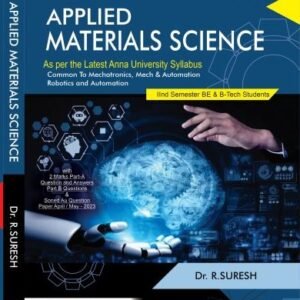
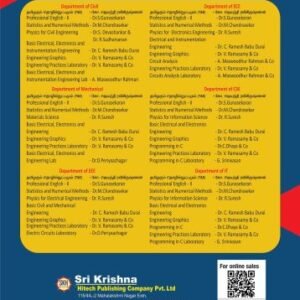
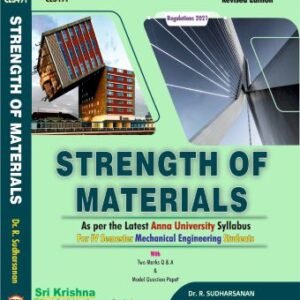
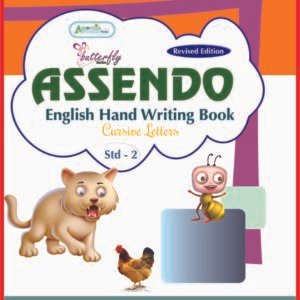
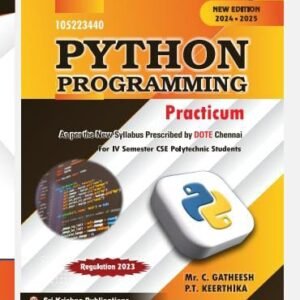



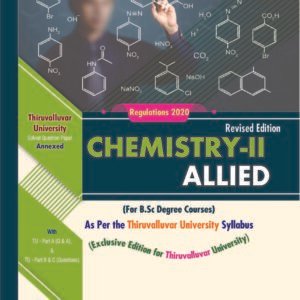
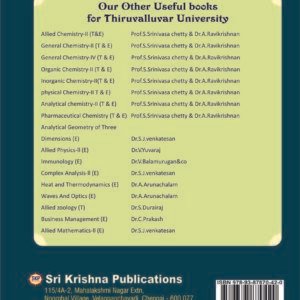
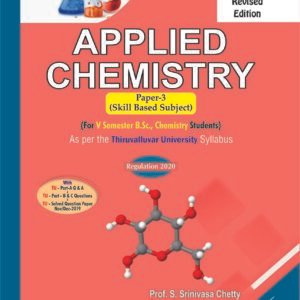
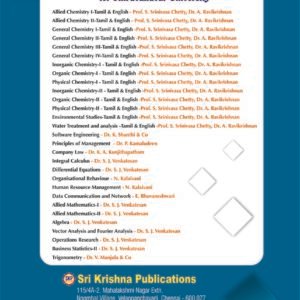

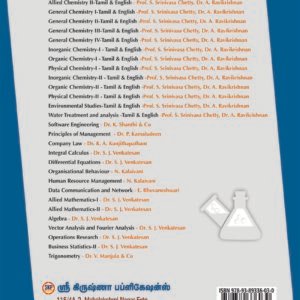


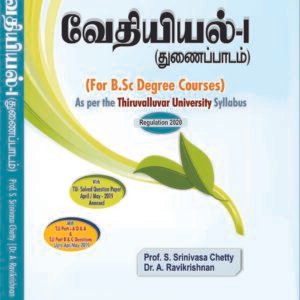
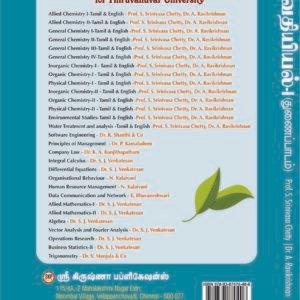
Reviews
There are no reviews yet.